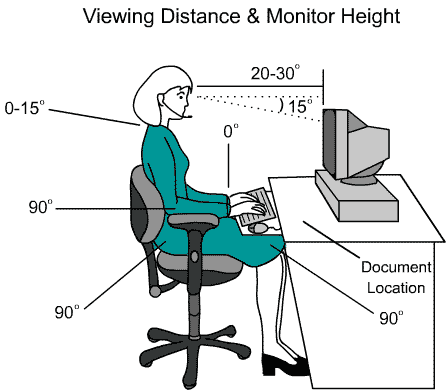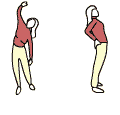Ergonomics
Ergonomics is the science and study of work, the worker and how job performance is influenced by the elements within a work environment. Application of ergonomic principles in the design of the work place can improve the work environment’s safety, productivity and efficiency. The Professional Ergonomist assists the campus community with ergonomics through product and job site analyses, workforce training and the recommendation of equipment’s with designs recognized for encouraging work efficiency.
During the Spring semester 2015, four industrial & systems engineering students conducted an analysis of the height adjustable workstation. Their report can be viewed here [Word] and their assessment here [Powerpoint].
Computer Work
During continuous-or prolonged-computer work organizing one’s workstation so that the alignments illustrated below are recruited assists in promoting comfort and productivity.
Stress Relieving Exercises
Give joints and muscles a rest by taking periodic breaks and stretching.
Back
Stand and raise your right arm overhead, bending to one side. Count to five. Repeat on the opposite side. Do three times daily.
Stand, supporting the lower back with hands, and gently arch backward. Count to five. Next, bend forward, placing hands on knees, and count to five. Do three times daily.
Neck
Lower your left ear to your shoulder. Slowly tuck chin to chest and roll head to the right until the right ear lowers to the shoulder. Repeat often during the day.
Shoulders
Circle your shoulders forward, then backward. Repeat often.
Cross arms over chest and hold for a count of five. Leading with the elbows, push arms back and hold for five. Repeat often.
Hands & Wrists
Tightly clench your hands and then release, fanning out the fingers. Do this five times.
Rest your forearm on a table top. Grasp the fingers of one hand and gently bend back your wrist for five seconds.




